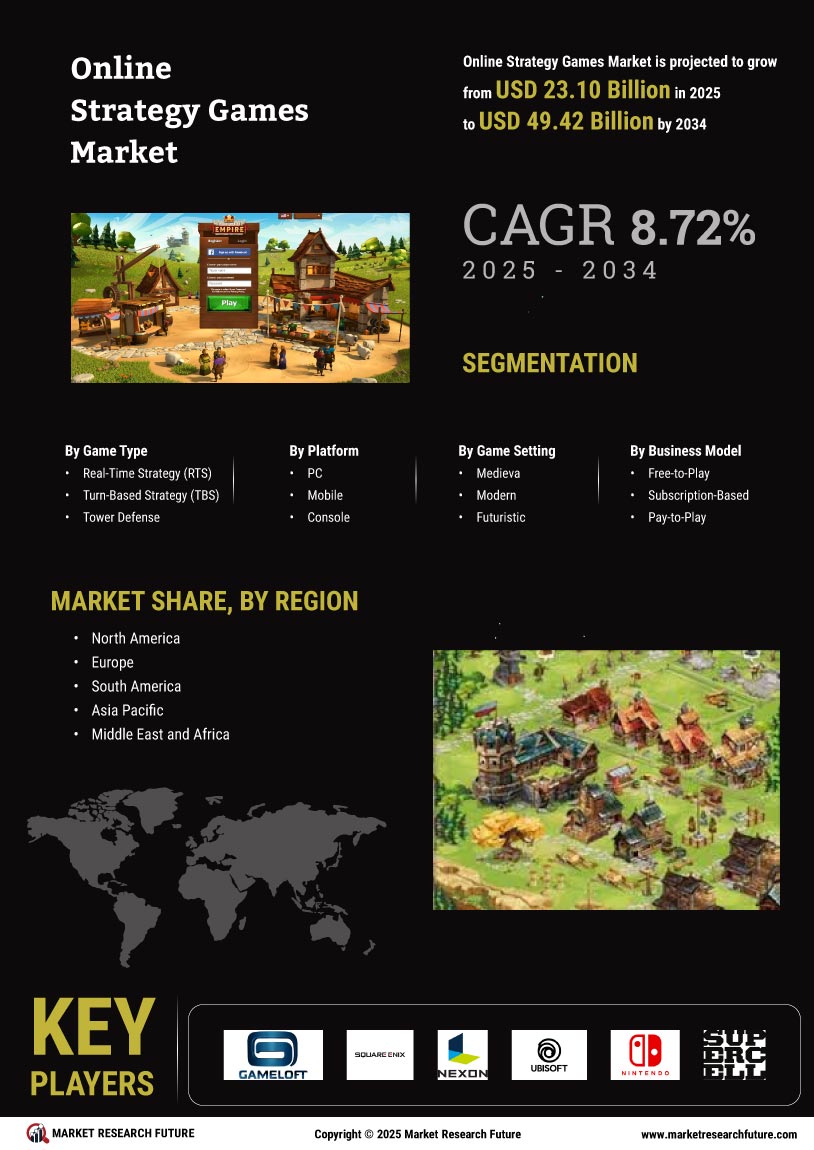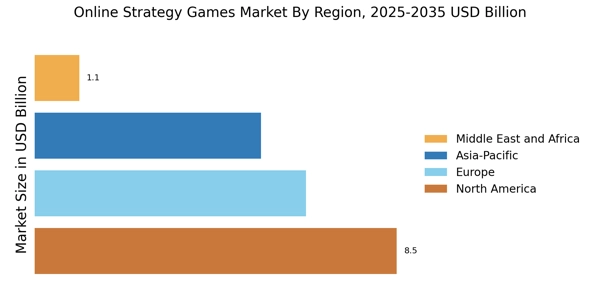The Online Strategy Games Market is currently characterized by a dynamic competitive landscape, driven by rapid technological advancements and evolving consumer preferences. Major players such as Tencent (CN), Activision Blizzard (US), and Supercell (FI) are at the forefront, each adopting distinct strategies to enhance their market positioning. Tencent (CN) continues to leverage its extensive distribution network and investment in emerging technologies, focusing on integrating AI and machine learning into gameplay to enhance user experience. Meanwhile, Activision Blizzard (US) emphasizes content diversification and community engagement, aiming to create immersive experiences that retain player interest. Supercell (FI), known for its mobile-first approach, prioritizes user-generated content and community-driven development, which fosters a loyal player base and encourages organic growth.
The business tactics employed by these companies reflect a moderately fragmented market structure, where collaboration and competition coexist. Localizing game content to cater to regional preferences has become a common tactic, allowing companies to optimize their offerings and enhance player engagement. This strategy, coupled with supply chain optimization, enables firms to respond swiftly to market demands, thereby maintaining a competitive edge. The collective influence of these key players shapes the market, as they continuously adapt to the shifting landscape of online gaming.
In August 2025, Tencent (CN) announced a strategic partnership with a leading AI firm to develop advanced gaming algorithms aimed at personalizing player experiences. This move is significant as it not only enhances Tencent's technological capabilities but also positions the company to better compete in an increasingly personalized gaming environment. By integrating AI, Tencent aims to create more engaging and tailored gameplay, which could potentially increase player retention and satisfaction.
In September 2025, Activision Blizzard (US) launched a new expansion for one of its flagship titles, incorporating player feedback into the development process. This initiative underscores the company's commitment to community engagement and responsiveness, which are critical in retaining a dedicated player base. By actively involving players in the development cycle, Activision Blizzard not only enhances the gaming experience but also strengthens its brand loyalty.
In July 2025, Supercell (FI) unveiled a new game mode that allows players to create and share their own content within its popular titles. This strategic move is indicative of Supercell's focus on community-driven development, which not only fosters creativity among players but also enhances the longevity of its games. By empowering users to contribute to the game ecosystem, Supercell cultivates a vibrant community that is likely to drive sustained engagement and revenue growth.
As of October 2025, the competitive trends in the Online Strategy Games Market are increasingly defined by digitalization, sustainability, and the integration of AI technologies. Strategic alliances are becoming more prevalent, as companies recognize the value of collaboration in navigating the complexities of the market. Looking ahead, competitive differentiation is expected to evolve, shifting from traditional price-based competition to a focus on innovation, technological advancements, and supply chain reliability. This transition suggests that companies that prioritize these elements will likely emerge as leaders in the ever-evolving landscape of online strategy games.


















Leave a Comment